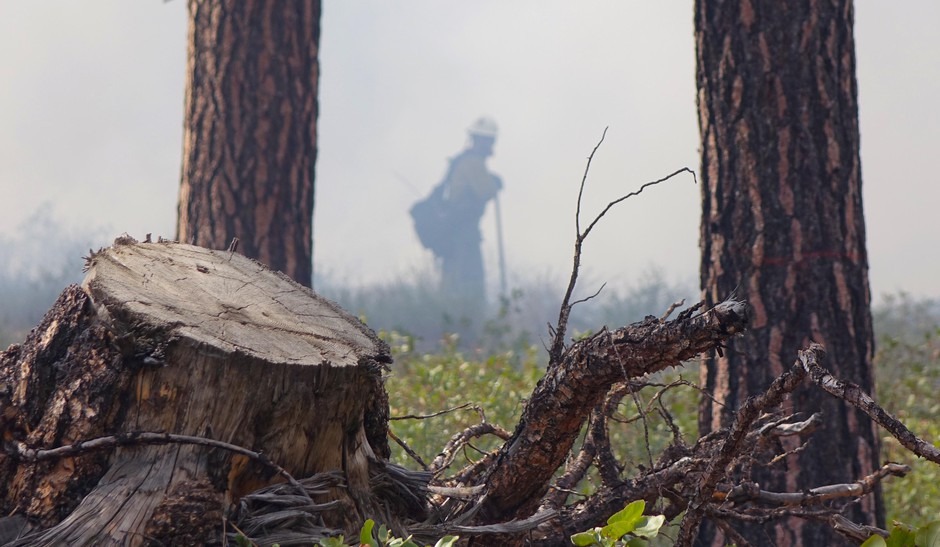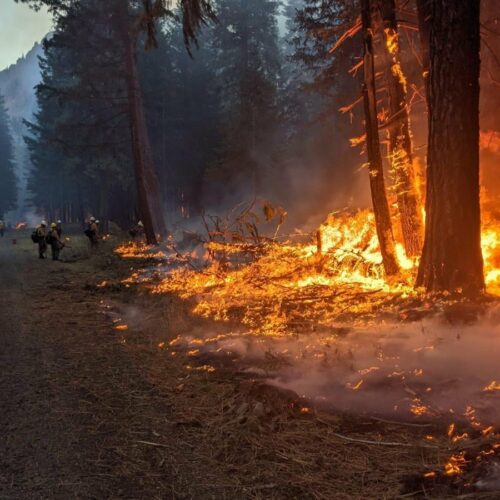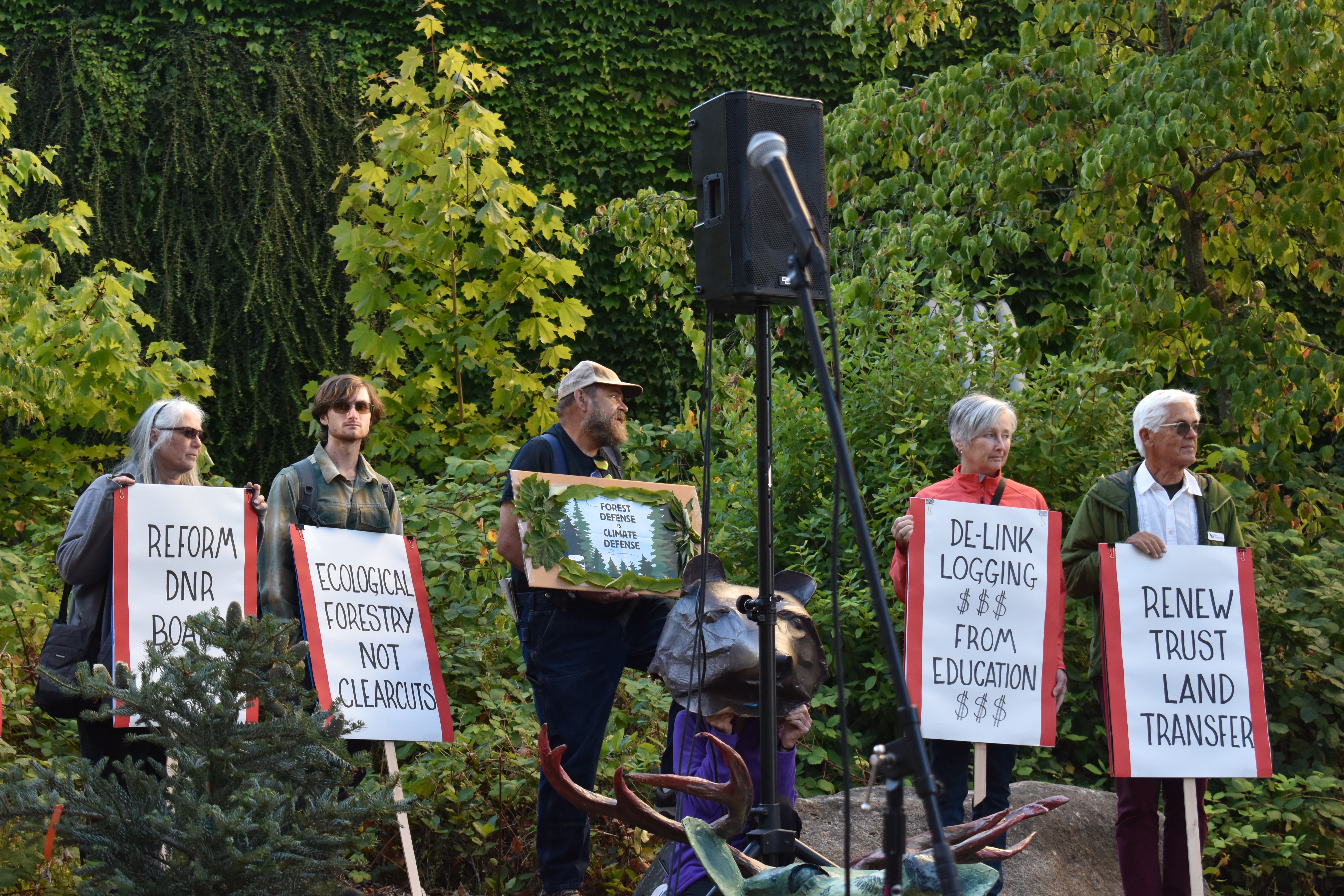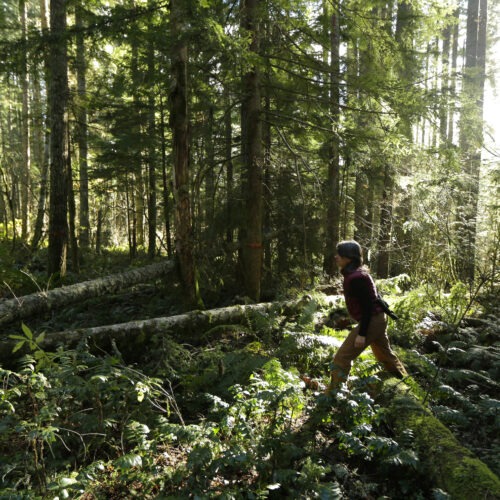
Inland Northwest Trees Are Playing An Outsized Role In Curbing Climate Change, Study Says
READ ON
New research suggests that a U.S. Forest Service proposal to allow the cutting of larger trees on public lands east of the Cascades in Oregon and Washington will have an outsized impact on forest carbon storage in the Pacific Northwest.
The newly-published research is the latest scientific evidence that forests are important buffers of climate change because they remove carbon dioxide from the atmosphere. Large trees are particularly efficient at capturing or “sequestering” carbon in their wood, leaves and roots.
“We’ve had some other systems that have been looked at around the world that have indicated that large trees store a lot of carbon compared to the rest of the above-ground components of forests. No one’s ever looked at that in these eastside forests,” said Eastern Oregon Legacy Lands ecologist David Mildrexler, lead author of the paper.
Mildrexler analyzed Forest Service tree inventory data showing the makeup of these federal forests — the kinds of trees, their sizes — and found that an average of only 3% of the trees are 21 inches or larger. He then calculated what percent of the forests’ total carbon storage was contained in these large trees.
Mildrexler found that those 3% of trees contained 42% of the above-ground carbon stored in those forests.
Larger trees have more limbs and greater circumference, meaning adding a ring of growth to the trunk and branches adds a lot more wood (a large proportion of which is sequestered carbon) than it would on a smaller tree. This means they’re much more valuable in terms of mitigating climate change.
The analysis comes as a result of a Forest Service proposal to change a 25-year-old rule that limits the harvest of trees 21 inches or larger in diameter. The “Eastside Screens” Plan Amendment covers six National Forests east of the Pacific Northwest’s Cascade crest.
The initial restrictions were put in place, in part, to help counter a century of loss of old-growth forests to logging. Now forest managers say they need more flexibility to cut larger trees. According to the plan’s environmental assessment, this will “better protect old trees and better provide for resilience of forest stands to future climate and disturbance stressors” like drought, wildfire and destructive insects. It says many forests east of the mountains have an overabundance of large, fast-growing trees like grand and Douglas fir that need to be cut to get the forests back to a more natural tree density.
But that draft assessment doesn’t address the impact cutting larger trees will have on carbon storage and in turn climate change. Carbon sequestration is important because climate change is an underlying driver of the very problems the Forest Service says it is trying to address.
“That’s what the main goal is for climate change — it’s to help these forests continue to do the role of taking 30% of our (CO2) emissions out of the atmosphere every year,” said study co-author Bev Law, a retired forest ecologist at Oregon State University.
Mildrexler says he doesn’t think that cutting larger trees is the answer to our forest resiliency problems.
“I think there’s a lot of synergy in protecting the large-tree component and focusing restoration in these smaller trees,” he said. “Thinking about the role these large trees play right now and in the next two decades with carbon storage and accumulation is absolutely important.”
The plan to cut large trees in Oregon and Washington’s eastside forests creates a tension between the desire to limit climate change and the need to prepare for its effects.
“It is a classic example of tradeoffs between competing objectives,” said William Keeton, director of the Carbon Dynamics Laboratory at the University of Vermont. “On the one hand, we have this important objective of storing carbon in our forest to help fight climate change. And on the other hand we have this objective of fire risk reduction.”
Keeton says large trees are vitally important for carbon storage, but both objectives should be carefully balanced. Preventing or encouraging lower-intensity wildfire can also keep carbon out of the atmosphere. He says the details of how the Forest Service plans to create fire resiliency in any given area are key.
“There are certain species in these forests where we shouldn’t be cutting any of the large trees. And there are certain types of sites… where a component of large shade-tolerant species (i.e. grand fir) would be completely natural and important.”
But he says in some places, removing larger trees might be an appropriate piece of fire restoration.
The Forest Service is currently reviewing comments on the draft environmental assessment for the proposed changes to the 21-inch rule.
“Carbon storage is one of many important topics we’re analyzing and will be included in the final environmental assessment. We’re looking at how to best balance multiple values and priorities, including managing for wildfire and protecting wildlife habitat,” said Forest Service spokesperson Stephen Baker in an email.
The final assessment and decision on the changes are expected next spring.
The new research was published in the journal Frontiers in Forests and Global Change.
Copyright 2020 Oregon Public Broadcasting. To see more, visit opb.org
Related Stories:

Federal government allocates over $6 billion to wildfire technology and management
Lawmakers are allocating over $6 billion this fiscal year to support the Department of the Interior and the United States Forest Service in wildfire response.
It’s an increase of 14% from the last year’s funding, and will support wildfire suppression, operations and a new research hub to aid fire management. This fiscal year, the forest service will see an increase of $576 million in available funding for wildfire response.

Rally Outside Board Of Natural Resources Meeting Demands Board To Address Call To Action
Hundreds gathered outside the Board of Natural Resources meeting in Olympia this week to demand the board make further commitments to forest conservation.

“Prepare For Higher Than Average Fire Season,” Says Washington Forest Protection Association
Paula Swedeen, a forest policy specialist for the Washington Environmental Council, walks through forest land adjacent to Mount Rainier National Park. (AP Photo/Ted S. Warren) Listen Reporter Lauren Paterson tells















